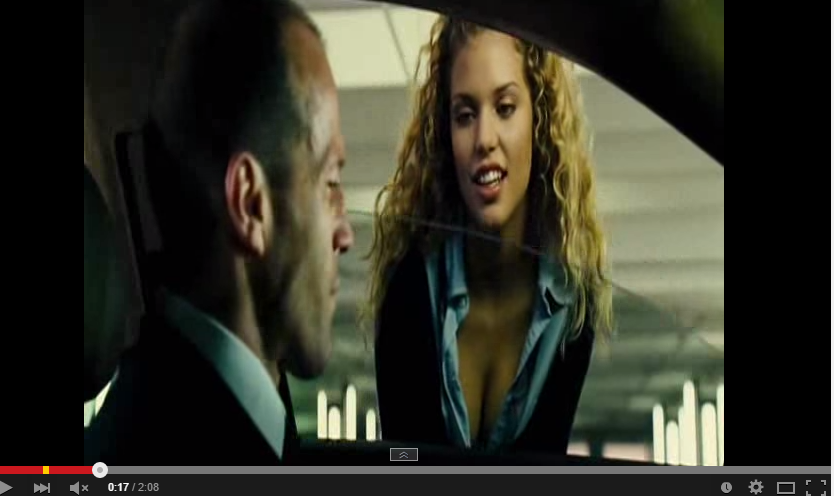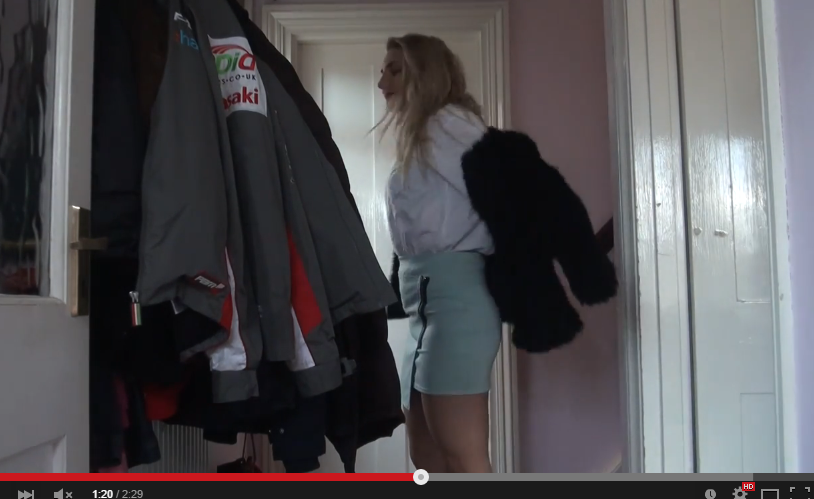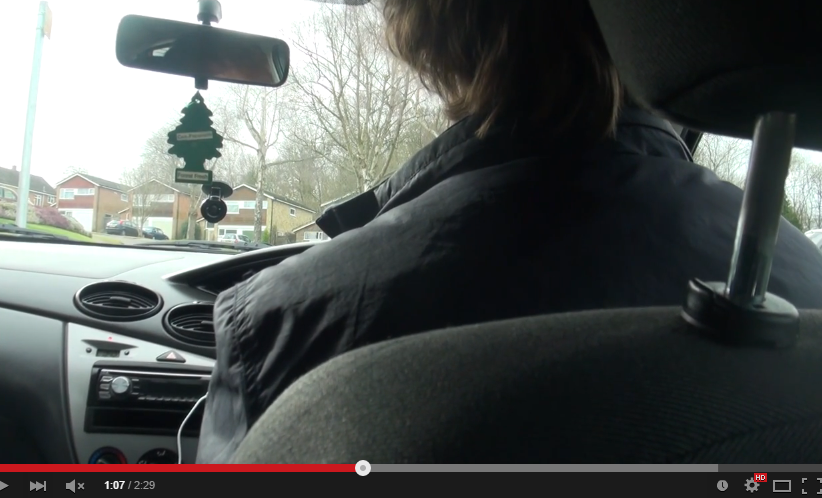In what ways does your media product use, develop or challenge
forms and conventions of real life media products?
Thriller films are usually mixed as a hybrid with other genres, however there are a selection of very distinct things that make this easier for us to see which include:
- The obvious thrilling plot that intrigues and demands the audience's attention to continue watching, the plots are usually quite scary and the characters are at some level of risk.
- Thrillers usually have a great deal of action and are very dramatic when introducing us to the protagonist and antagonist of the story.
- Usually with this particular genre we understand who is the antagonist as soon as we are introduced to the character.
- The story usually begins with a dilemma or serious problem which continuously gets worse throughout.
- This genre commonly uses a lot of suspension to build up tension and enigma.
- The music used in films of this genre can also build up the intensity of the scenes, sometimes the lack of sound makes it all the more intense.
- The title of the film usually gives the audience an idea of the general understanding of the plot.
- The Thriller genre has a very particular idea on iconography
After researching a couple of Thrillers I found many examples that support my points:
The Cube https://www.youtube.com/watch?v=YnuRpHkg0H8
This Thriller is a particularly good example as the opening shows us a character who may or may not be the protagonist of this scene.
In the short clip we see:
 |
| Close up with lighting to show the detail |
- The dilemma or serious problem this character is in.
- The obvious thrilling plot where the character is lost and at a great level of risk.
- It shows enigma and suspense.
- It uses eerie non-diegetic off screen background music.
Transporter https://www.youtube.com/watch?v=9WUaDcmfgQc
- Introduces the protagonist and the antagonist almost straight away.
- Great deal of action and violence.
- The protagonist is instantly faced with a problem which then helps us learn about the character.
- The clip creates enigma as we know very little about the protagonist.
- We see very obvious examples of iconography with the props and objects used for example different types of weapons.
 |
| Dramatic extreme close up |
Camera
These thriller openings use lots of different camera shots, there is usually sequence of overly used shots such as:
 |
| Medium shot to help portray the status of characters |
- Extreme close ups which helps us to see the details of either a characters face or a significant moment in the film.
- Extreme long shots or long shots which helps the audience to see the setting of the film and gives us more of an insight to the situation.
- Group shots which shows us the relationship between characters.
 |
| Group shot, clear about different characters |
- There may also be over the shoulder shots which are used to hide the identity or facial expressions of characters, these are often used in mystery-thrillers.
Particular angles are also effective in the making of a good thriller film:
 |
| Very low angle to show entire setting |
- Canted shots are often used to create a sense of macabre instability in a shocking scene, it may also represent the characters emotions.
- Very low angles are very popular amongst Thrillers to separate the more powerful and dangerous characters.
- Eye level point of view is important in this genre to create a sense of normality in the character in which the audience can almost relate to a certain character.
Sound
Thrillers like a lot of films use different types of sound to help build the plot Thrillers however use similar effects:
- Foleys are used an incredible amount in Thrillers to emphasise certain sounds whether that be a gun shot, or walking steps. Foleys are crucial in the making of a Thriller as everything is meant to be more shocking and more exciting for the viewers.
- Off-screen sound is popular as it creates enigma as we are unable to see where the source of the sound is coming from which creates a big deal of suspense.
- Silence is the most effect way to create an atmosphere in a Thriller as it is foreboding, it creates an intense situation.
- Synchronised sound is commonly used as it fits in well with the genre, whether it be a really sinister sound or a fast upbeat sound.
 |
| Example of a white transition to show the change of time |
Editing
Pacing is used commonly when it comes to this particular genre, however when an intense scene is on they may accelerate the shots to appear much shorter, this would be commonly used with a shot reverse shot situation between two characters perhaps the protagonist and antagonist in a heated conversation. Ellipsis' are used to compress time and make it much quicker to show a critical scene which may not need to be shown in great detail.
 |
| We used natural lights here which made good effects |
Mise en Scene
 |
| Dark scene but low lighting to highlight his face |
Lighting and colour: Different lighting can help emphasise a certain scene or emotion. After doing the research on Transporter I found that the lighting made a massive effect as it was generally low lighting but there would be source of light highlighting the character, this helps us see the character more clearly and also gives us a sense of the setting the character is in.
 |
| Stereotypical shot of a thief from The Transporter |
Costume, hair and make up: In Thrillers there is no particular costume as there could be many different story plots which require different costumes, I found no sequence of the same costume apart from the stereotypical costume of a thief who wears black clothes and gloves. Hair and make-up are varied aswell as there is never the same character, but just stereotypes being copied.
Setting, decor, props: After doing the research i found in many of the different films including The Usual Suspects and Girl with the dragon tattoo there was always a typical dark scene with very little lighting, i found that portrayed the characters in a way that you see a more sinister side to them. Props commonly seen in Thrillers can include gloves, briefcases, weapons, cars, money, this is because it helps to relate the story line to the viewer.
 |
| Here we see the antagonist attacking the girl with a prop |
Body language and facial expression: You can't generalise body language and facial expressions with Thrillers as there is so many different kinds.
My Thriller
My Thriller film follows the conventions of this genre, i can see this because:
 |
| Close up of our protagonist at risk |
 |
| Camera not in focus |
 |
| Make-up shot |
 |
| Fake blood - Make up shot, example of the lighting we used in a dark setting |
- It starts off with a clear problem that the protagonist is faced with.
- We are introduced to the Antagnoist and we see the obvious type of charcter he is.
- There is a lot of action and danger which involves both of our characters.
- The plot starts at the end and there is a flashback to create enigma.
- There is a different music, we have eerie music playing in the background to create suspense, but we use a lot of silence too.
- We used lots of different editing skills such as quickening the pace to make the scene faster, we found this was a good idea so that the viewers wouldn't loose interest, we also used a blur effect where the camera wasn't completely focused, this was effective because it portrayed our characters emotions.
- We used very few props but we used a car and a stick, this fits in very well with the other research i did, we found that both of these props were very useful to us and portrayed our antagonist more.
- The make-up used in this opening was mainly fake blood to make the storyline seem more violent and as it shows the character bloody at the start it makes the audience want to keep watching to see how the story unravels itself. We used normal make-up to make the character seem as if she was getting ready.
- We had to use lots of different lighting effects, purely as one of our settings was in a woods in the dark, we used low key lighting to create more detail on the faces of our characters.
- The dark sinister background is a very commonly scene seen in all Thrillers, it is very stereotypical.
- Our Thriller had 3 stages of narrative like most other Thrillers, the opening, the problem and the climax.
- For costume we used very stereotypical costumes for our leading female character to portray as sense of normality to the audience, the male character however we felt should wear normal casual clothes which did not fit the normal criteria, this is because of the relationship between the protagonists mum and the antagonist.
 |
| Stereotypical picture of a young girl in costume |
 |
| Our Protagonists costume |
 |
| Over the shoulder shot from our antagonist, the costume is dark to match the stereotype. |

















No comments:
Post a Comment